The Surprising Truth About These U.S. Olympic Athletes
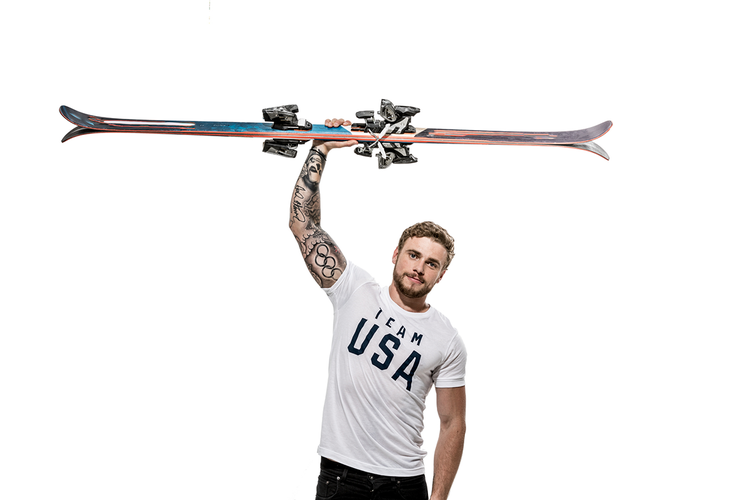
They’re motivated—but not by what you’d expect.
They’re hurtling down mountains, they’re subjected to G-force, and they’re playing with blades (skates—but they’re sharp!). Their every movement is scrutinized by their fans and the competition. That’s plenty of distraction for any athlete. So U.S. Olympic Hopefuls must be adrenaline junkies, and they have to be laser-focused on that gold medal. Right?
Not the world-class athletes who make up Team 24: freeskier Gus Kenworthy, bobsled pilot Elana Meyers Taylor and U.S. Paralympic sled hockey player Rico Roman. January calls for a big (slightly scary) goal for many of us, and with the Olympic Winter Games 2018 in Pyeongchang, South Korea, right around the corner, all three athletes have something to help the rest of us go get it.
Gus Kenworthy: Live authentically
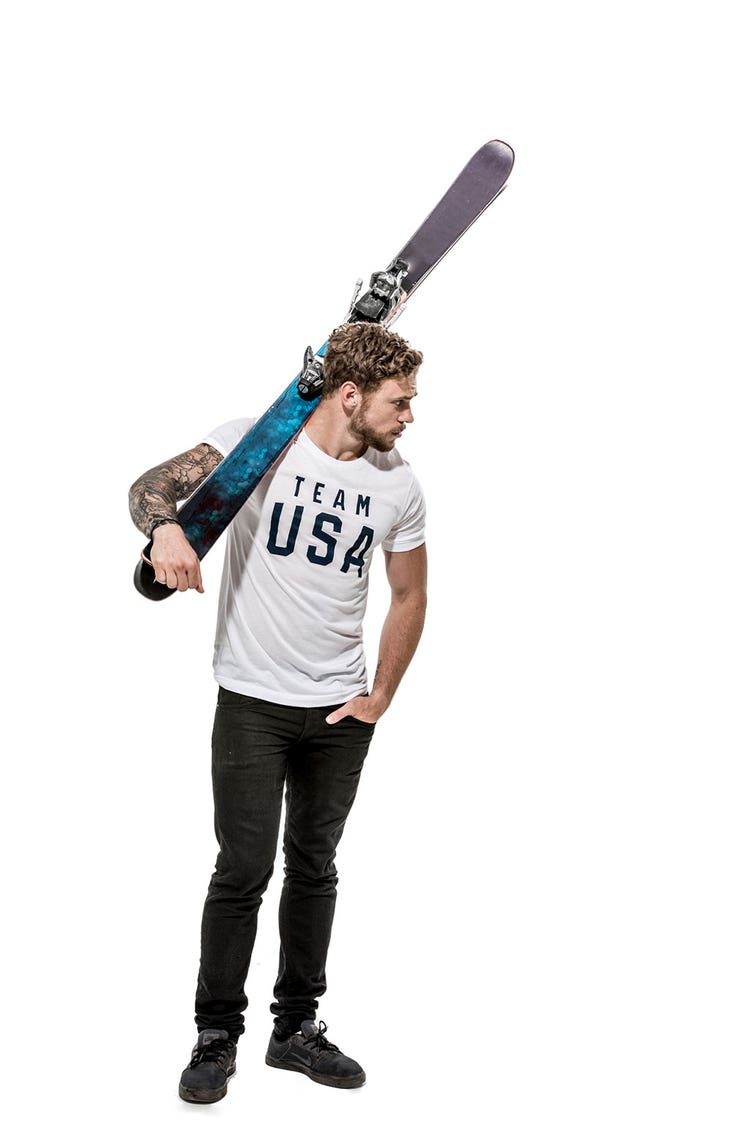
Kenworthy has conquered all kinds of mountains, literally and figuratively, since he burst on the world stage and medaled at the Olympic Winter Games 2014 in Sochi, Russia.
He’s no stranger to adrenaline: The path to Sochi entailed nerve-racking competition, so making the team was a tremendous relief. But in Sochi, Kenworthy fell on his first run in the finals. As he prepared for his second run, he could hear media around him speculating on the chances of a U.S. sweep. Fortunately, Kenworthy landed his run in what he calls a fairy-tale ending to the competition.
But Kenworthy was carrying an enormous weight up and down the slopes and everywhere he went. “[Being gay] was something I always thought of as a downside to myself and something that I had to kind of make up for,” he says. Kenworthy had pushed himself to work hard in school and on the slopes in anticipation of others’ disappointment. The pressure of hiding his identity coincided with a faltering performance after his silver medal at Sochi, and he says he finally reached “a tipping point.”
Kenworthy’s agent was one of a few people who knew he was gay, and he advised Kenworthy to finish the season and then consider his next move. The advice gave Kenworthy some peace of mind, and he finished the season ranked No. 1 in the world. He chose his moment and his platform (the cover of ESPN’s magazine). He’d always thought he would finish his skiing career first, but says, “Then I realized that was just showing that I was ashamed of it. I felt if I could show that I wasn’t ashamed of it, that it would help other people and myself.”
“In skiing and any sport, so much of your performance is not actually based on physical ability,” Kenworthy explains. “It’s based on your mental state.” Hiding his identity impacted his performance: “The ability to come out and be myself and be open and honest allowed me to just ski so much better.”
Going for gold: So how does Kenworthy go after the podium? “I’ll close my eyes and try to visualize my entire run. Every single monotonous detail of my run, everything that I want to do, how I want it to feel, how I want it to look, and I’ll go through it step by step,” he says. Then he lets muscle memory take over.
When it comes to goals, he says, “I will set one goal so far out of reach it’s like a pipe dream, and then I’ll set a series of smaller goals to make it to that goal. There’s a Latin expression, nihil sine labore, ‘nothing without work.’ It’s something that I’ve reminded myself throughout my career because you’re not going to get anywhere without hard work, and talent and natural ability only get you so far.”
Elana Meyers Taylor: Discover what’s possible
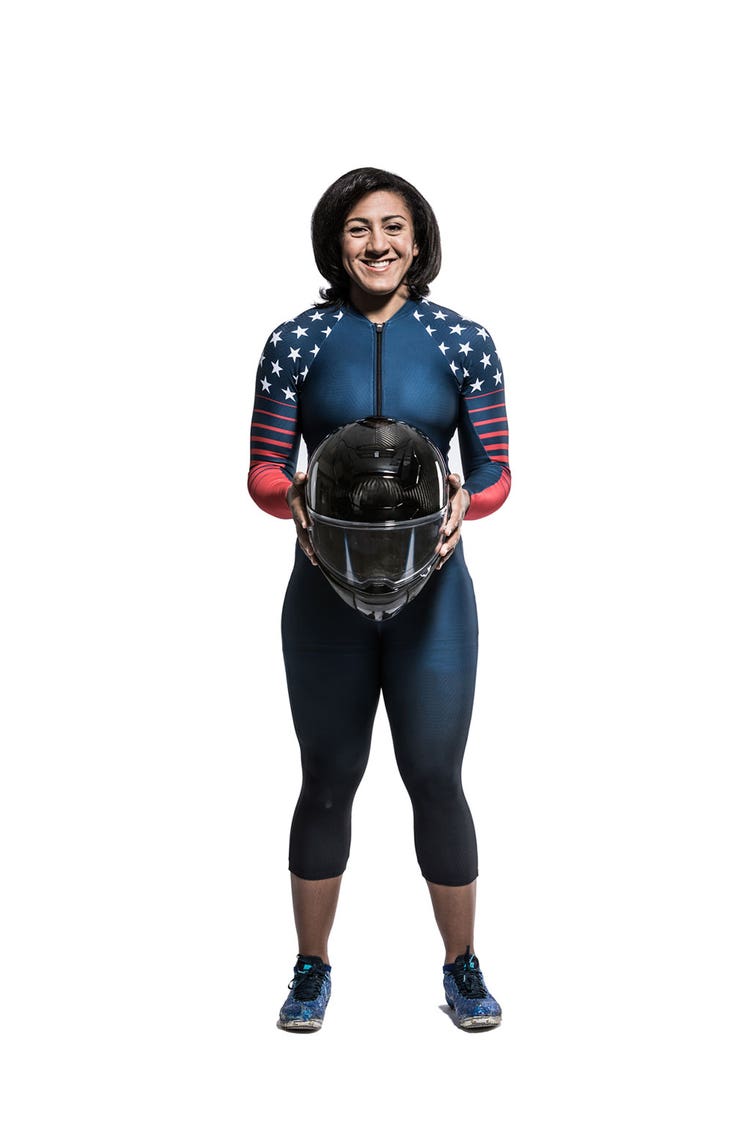
Two-time U.S. Olympic bobsled medalist Elana Meyers Taylor grew up in Georgia, playing multiple sports. Her “bad habit,” she says, is calculus. So it makes sense that she loves the physical sensation of her sport and is also interested in calculating how far women can go in competition. “It’s thrilling to try to figure out how we can go faster,” Taylor says. “How can we break speed barriers? And how much faster a woman’s bobsled can really go?”
She insists she is not an adrenaline junkie. “A good bobsled ride feels like being shoved in a metal garbage can and kicked down a rocky hill,” Taylor explains. “So my first trip, we’re hitting walls. I’m feeling G-forces just slamming me down into the bottom of the sled.” Her reaction? “I just got out of the sled and [thought], What did I just do? I have no idea, but I’m going to go do it again.”
Taylor began as a “push” athlete in the sport, but she has since transitioned to the role of pilot. Why? “A little bit [of it] is because I’m a control freak,” she says. “Being in the front seat, you’re actually controlling and driving these sleds down the track. … The wins, the losses, they’re mostly under your control. And yes, sometimes a crash is, too. But part of that is the responsibility of being a driver, and it’s something that I enjoy highly—and it’s a responsibility that I take very seriously.”
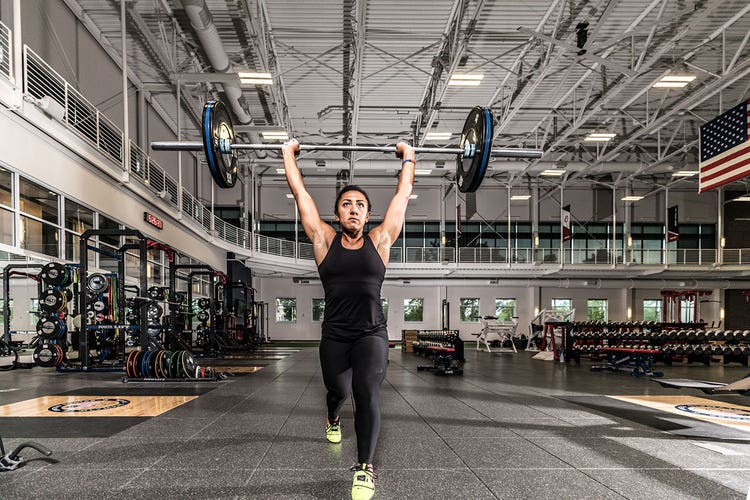
Training for gold: Taylor is married to Nic Taylor, also a competitive bobsledder. Bobsled athletes train for speed as well as strength because they have to push a 400-pound object as hard as they can from a dead stop. Taylor deeply values training with her husband as well as her teammates to get through truly “heavy” training sessions.
She also prizes her yoga practice. “Every time you go down a track, you’re encountering four or five G’s on your body—that’s four or five times your body weight pressing you down to the sled,” Taylor explains. Yoga allows her body “some time and space to really return to what [it] naturally would be.”
Goals, as a whole: Taylor does not place her professional quest for gold above her personal goals. She is a self-described foodie, so it’s not surprising when she describes each part of her life as a different section of a whole pie. “The important thing about it is if you don’t have a slice of that pie, then you don’t have a full pie,” she points out. “And nobody wants half a pie. So being really good on the ice isn’t going to take away from spending time with my husband.”
Going for gold: And with her holistic perspective on her goals, Taylor says gold is something she wants so bad she can taste it. She replays her silver-winning competition at the Olympic Winter Games Sochi 2014 “continuously,” and she says it’s driving her to win in Pyeongchang.
Once in competition, Taylor says she gets into the right mindset first with prayer and then by working to achieve “a relaxed, focused calmness.” So she listens to music and chats with friends to get focused, saying that “in order to access that part of my brain, I have to be relaxed.”
Rico Roman: Sometimes you have to cut things out of your life
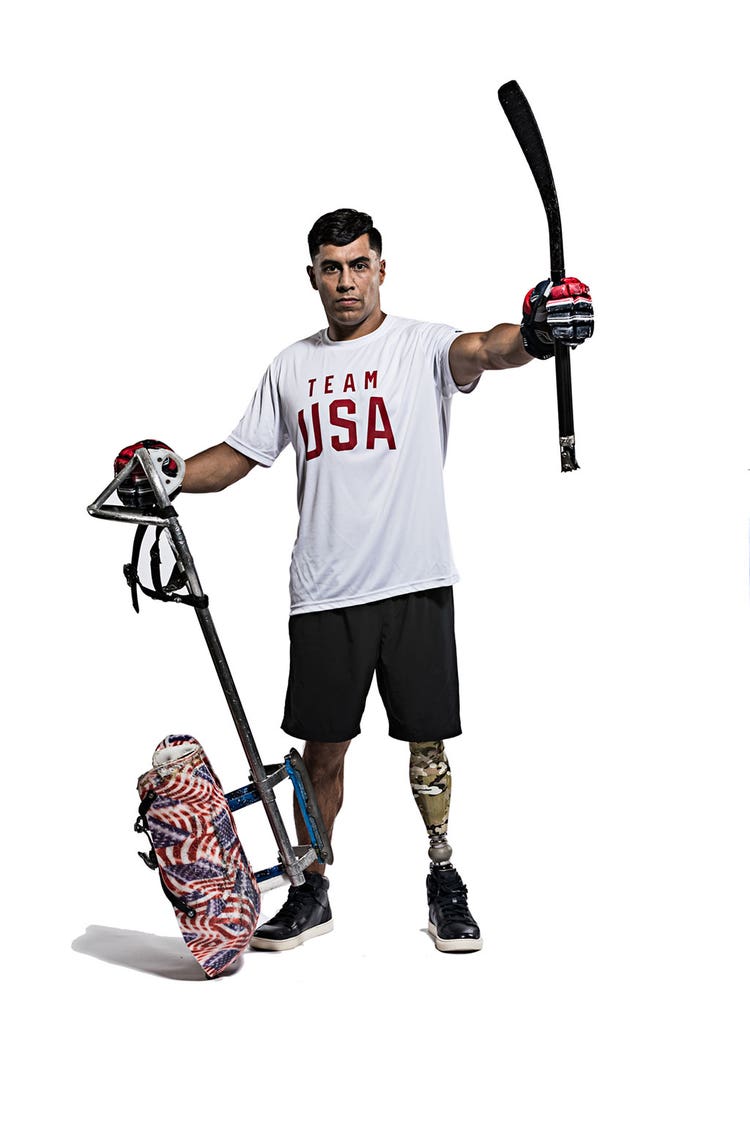
U.S. Paralympic sled hockey athlete Rico Roman has a collection of medals—gold from the Paralympic Winter Games 2014 in Sochi and gold, silver and bronze from multiple world championships won since 2012—and he also has a Purple Heart. The distinguished veteran was injured by an improvised explosive device and nearly made the ultimate sacrifice for his country during his third tour of duty with the U.S. Army in Iraq.
“At one point the doctors asked me if I wanted to save my leg. I remember thinking that was a ridiculous question. ‘Yeah, of course I do!’” Roman explains. “Who wouldn’t?” After a year of never-ending pain, ongoing medication and multiple surgeries, and with multiple bolts and screws holding the leg straight, Roman found it very difficult even to enjoy simple things like a trip to the movies or driving a car. He longed to be able to chase after his kids again.
He began to rethink his decision and is matter-of-fact about what happened next: “I spoke with a lot of my family members and other veterans who had their legs amputated. I said my prayers and I amputated my leg.”
With his children at his bedside post-surgery, he remembers, “Seeing their little faces and their big eyes, I knew right then and there it’s not about a pity party and ‘Oh, poor me with this bum leg.’” He acknowledges, “Sometimes to move forward in life, you’ve got to cut things out that are holding you back from the life you want to lead—in my case, even if it’s your leg—or bad habits or being around the wrong people, or even the wrong mindset.”
Roman had to start all over again. Just learning how to stand required weight training and core exercises followed by “a little bit” of standing—and trusting that his prosthetic leg would support him. Roman would skip lunch on a regular basis to return for a second round of rehab “just because I wanted to be the best that I could be.”
After rehab, Roman was introduced to sled hockey by Operation Comfort. His squadron leader in Iraq was a huge hockey fan, so Roman laughs and says he automatically told the group “no, thanks” a bunch of times when they asked him to give the ice a try. But besides the similarities to “football on ice,” it was an all-veteran team with the camaraderie he’d left behind with active duty. He was hooked his first time out: “I got hit so hard, my helmet, sticks and gloves flew off, and somebody skated by me real fast and yelled, ‘Yard sale!’ because my stuff was scattered all over the ice. I knew right then and there, ‘I need to do what it takes to get on this team.’”
Training, to stay up: Days revolve around Roman’s training regimen and the kids’ schedules. His routine includes a “grueling” morning workout, an afternoon skate and another workout. “Core exercise is key to my sport [because] just staying up [on skate blades—and not getting knocked over] uses your core,” Roman explains. He says shooting the puck also requires core strength because the athletes aren’t using their legs.

Going for gold: Roman talks about the significance of mental preparation, teamwork—and even fun—to win. “When I’m training, I don’t quite think about the gold medal. I think about what that athlete on that other team is doing that I’m not doing. How hard is he training, and what should I be doing?” he says. “Whether you’re a goal scorer or you make big hits or you win face-offs … everybody has their part on the team. I go over that, visualize it in my head, listen to some music, and just stay really light and fun.”
https://www.youtube.com/watch?v=2kFECV_wkw0
Photo credit: Tom Casey, box24studio.com
Grooming, hair & make-up: Chanel P, Jessica Chynoweth